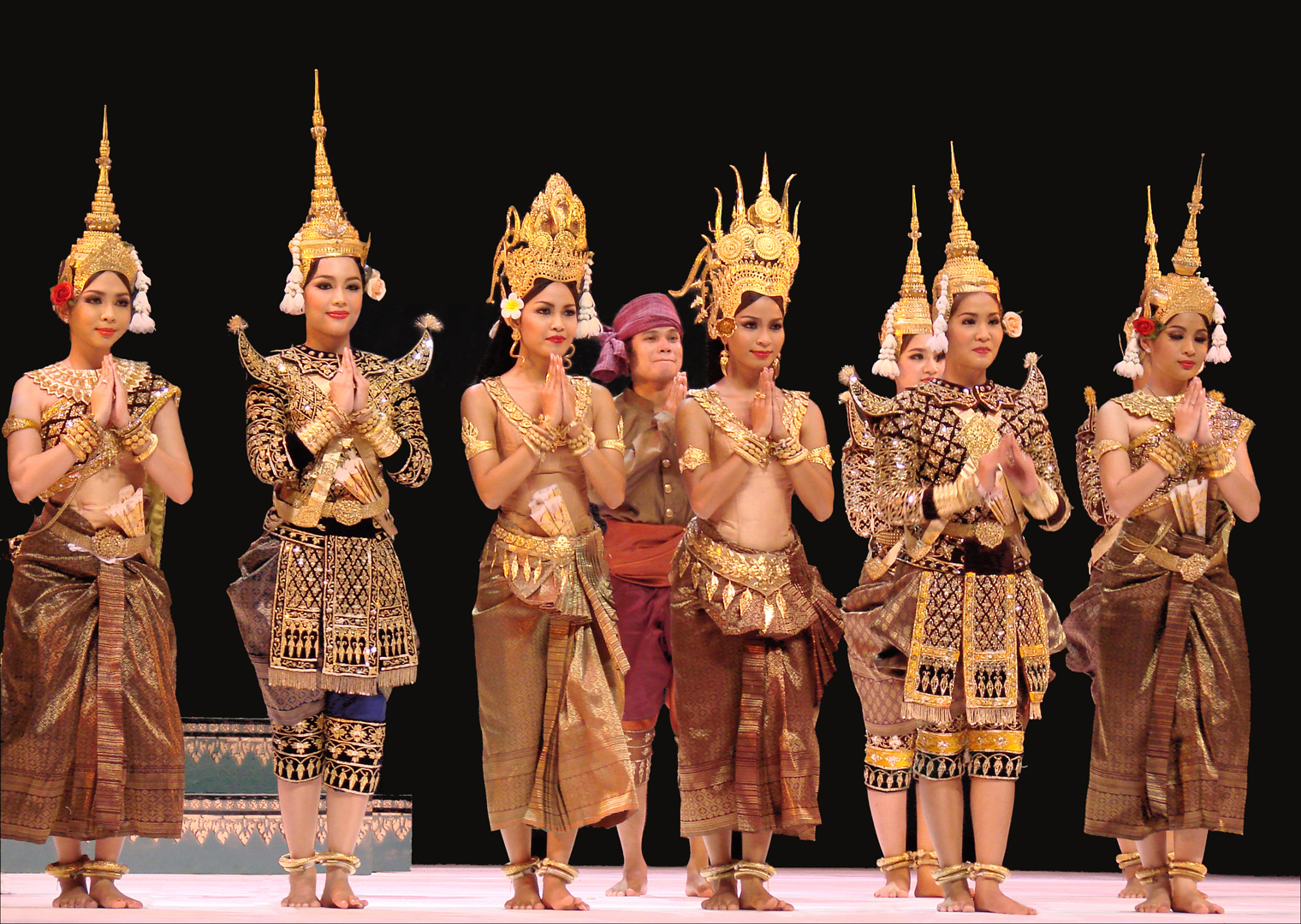
The Royal Ballet of Cambodia, formally known in Khmer as Robam Preah Reach Troap ("Dance of Royal Wealth"), is a classical Khmer dance distinguished by its intricate hand movements, elaborate costumes, and deep historical ties to the Cambodian royal court. Historically performed at significant royal ceremonies like coronations, weddings, funerals, and holidays, its repertoire draws from ancient Khmer legends. This art form is a vital cultural heritage, embodying traditional values of refinement, respect, and spirituality for the Khmer people. Despite facing near extinction during the devastating Khmer Rouge regime in the 1970s, it has persevered and gained international recognition, being inscribed on the UNESCO Intangible Cultural Heritage Lists since 2003. While commonly, though incorrectly, referred to by laymen as "apsara dance," apsaras are merely one type of character within its diverse repertoire, though its romanticized affiliation with the apsaras and devatas of Angkor persists.
The history of the Royal Ballet dates back to at least the 7th century, where it served as a funeral rite for kings, and flourished during the Angkor period with thousands of temple dancers (apsaras) serving as entertainers and messengers to divinities. Following the decline of Angkor and raids by the Siamese kingdom of Ayutthaya, the tradition faced challenges, including a scarcity of dancers which necessitated imports from Bangkok in the mid-19th century. During the French colonial era, the dance was increasingly presented to foreign dignitaries and promoted as a national identity, notably captivating Auguste Rodin during the 1906 Colonial Exposition. Post-independence, figures like Queen Sisowath Kossamak played a crucial role in its revitalization and modernization, introducing reforms like shortened performances and adapted choreography. Under Prince Norodom Sihanouk, the ballet became a powerful tool for cultural diplomacy, showcasing Cambodia's national identity to international audiences, leading to the creation of shorter, tailored pieces for diplomatic events. Modern performances have also expanded to include male dancers in more dynamic roles.
Hello from Cyprus ♥️